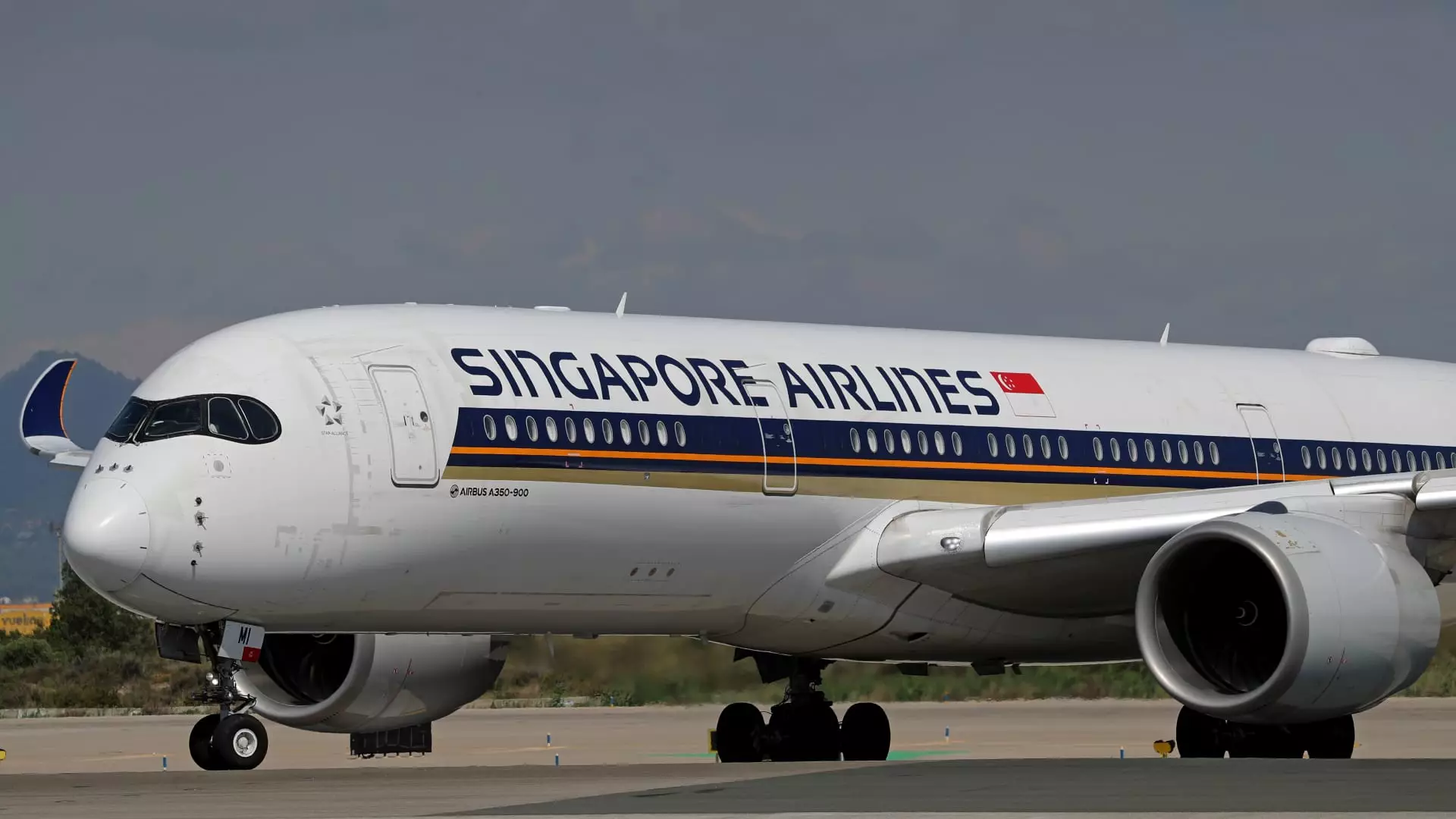The fear of intensified competition has led to a notable decline in the stock value of Singapore Airlines, particularly after the airline revealed a staggering 48.5% drop in net profit for the first half of its fiscal year, spanning from April to September. This financial turbulence triggered an initial stock plunge of 6.2% at the opening bell, although it later stabilized at a decrease of 3.57%. As investors reacted to the disappointing profits, concerns had set in regarding the sustainability of the airline’s performance amidst escalating market pressures.
During this recent reporting period, Singapore Airlines reported a net profit of just SG$742 million (approximately $559.12 million), in stark contrast to SG$1.44 billion achieved in the same timeframe the previous year. The operating profit mirrored this downturn, plummeting to SG$796 million—a 48.8% year-on-year decrease. Encouragingly, revenue experienced a modest increase of 3.7% to reach SG$9.5 billion. However, the slight revenue growth appears insufficient when juxtaposed against the steep declines in profitability.
In an official statement, Singapore Airlines attributed these disappointing financial results to heightened competition in significant markets, leading to diminished yields. The Chief Commercial Officer, Lee Lik Hsin, underscored the company’s recognition of swelling rival activity as airlines collectively rebound from the impacts of the COVID-19 pandemic. SIA’s CEO, Goh Choon Phong, added that the restoration of flight capacities has further pressured yields, which are pivotal for profit margins.
Despite the turbulence in profitability, Singapore Airlines reported a year-on-year passenger traffic growth of 7.9%. However, this increase falls short of its capacity expansion of 11%, resulting in a decreased passenger load factor. This metric, which reflects the percentage of available seating capacity used, dipped by 2.4 percentage points to settle at 86.4%. This indicates a gap between the growing capacity for passengers and the actual demand, placing further strain on the airline’s revenues.
In light of these operational challenges and competitive pressures, Singapore Airlines is focusing on growth, evident in its announcement of a substantial SG$1.1 billion investment for a comprehensive retrofit program for its fleet of Airbus A350 long-range jets. The plan aims to have the first retrofitted jet operational by 2026 and expects completion by 2030. Such proactive measures indicate that the airline is not retreating in the face of fierce competition; instead, it is looking to innovate and enhance customer experience.
Looking ahead, while demand for air travel shows potential for recovery in the latter half of the financial year, Singapore Airlines must navigate a landscape that anticipates sustained rivalry. The balancing act between competitive pricing, capacity management, and service enhancement will be crucial if the airline hopes to regain its footing in a dynamic market environment. As it stands, Singapore Airlines is at a pivotal juncture, necessitating strategic foresight and adaptability to counter the formidable challenges on the horizon.

